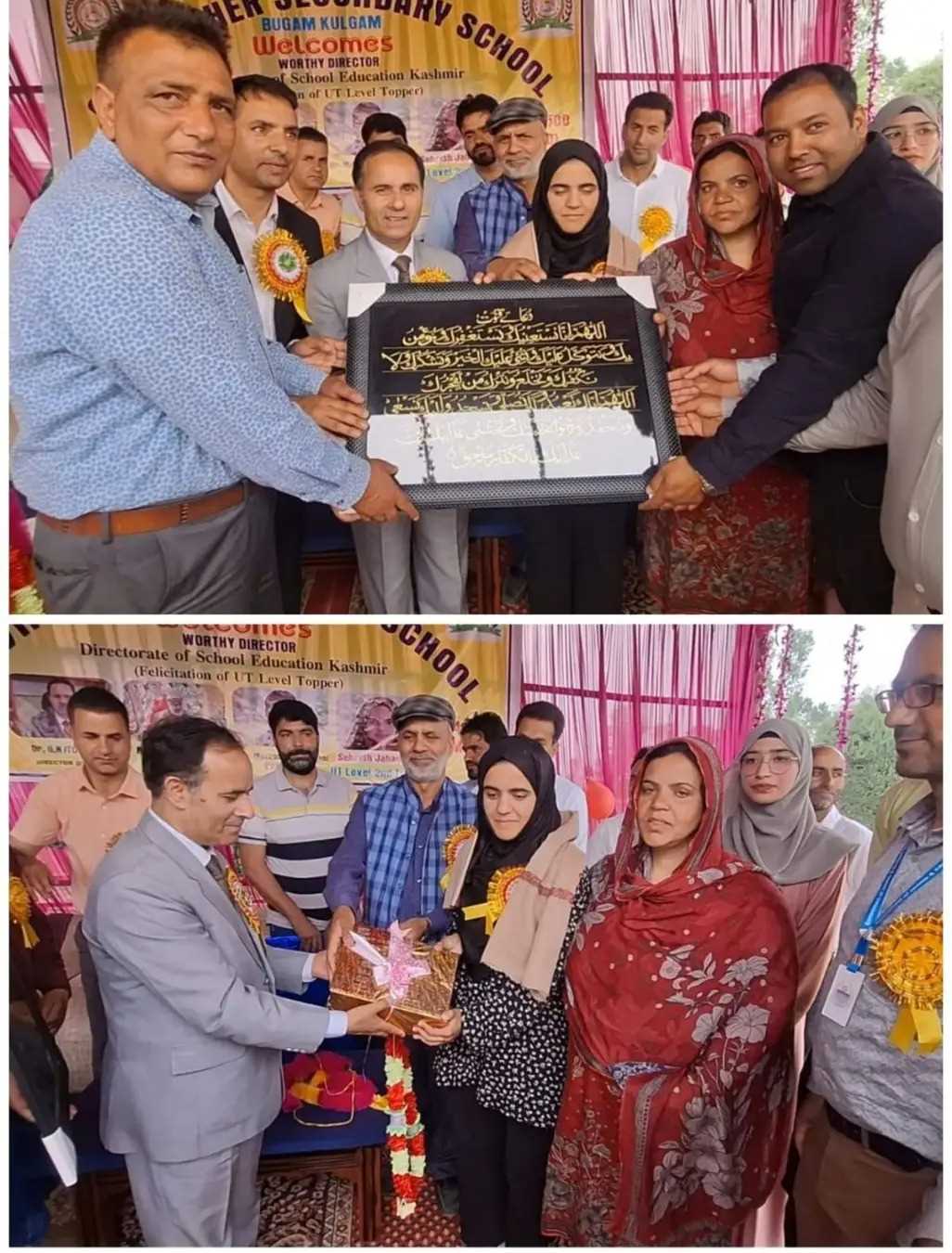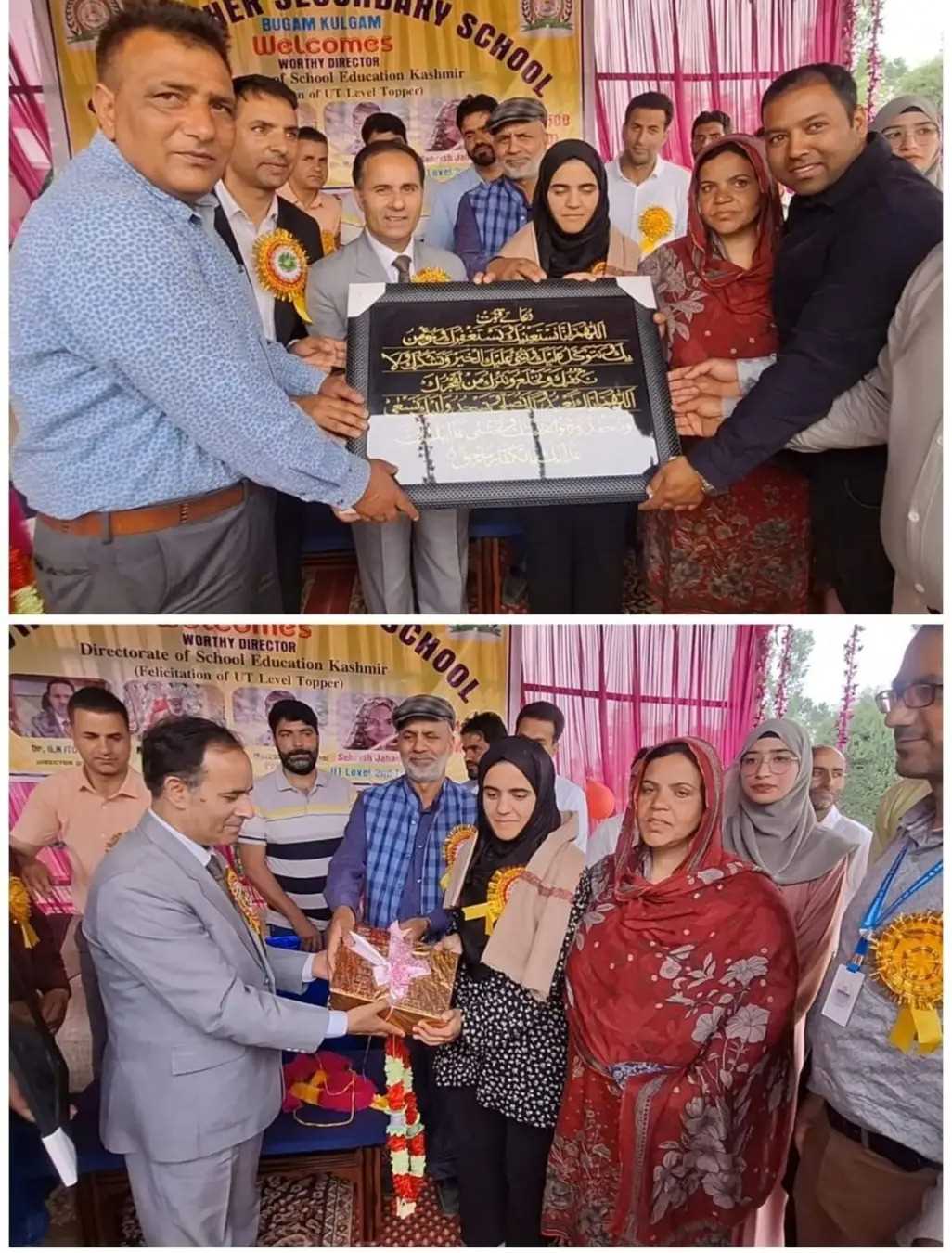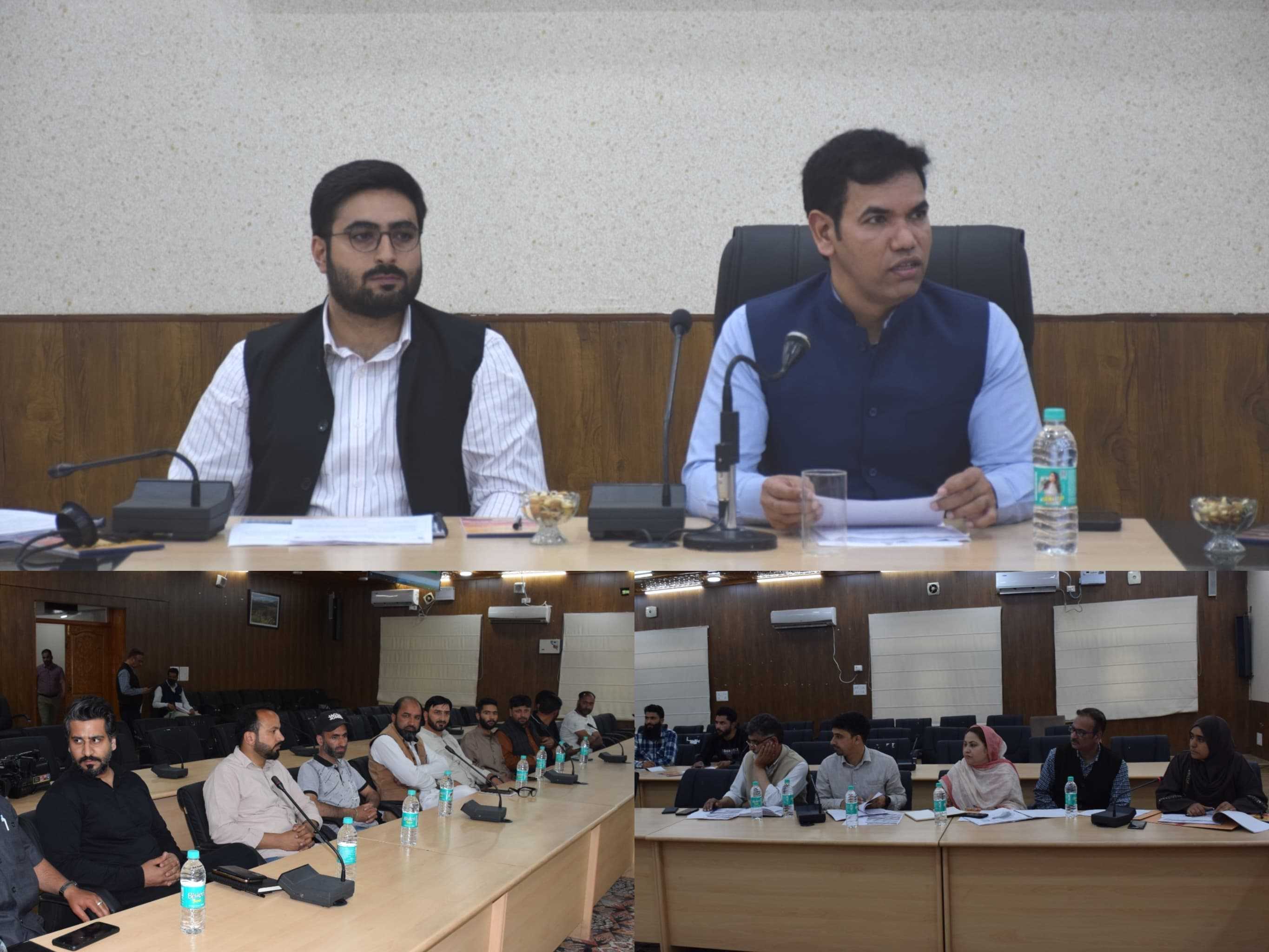
The menace of forces to travel extra miles in Srinagar’s traffic management. Being the capital city, it has long struggled with traffic congestion, a problem exacerbated by presently poor traffic management practices
Srinagar, the summer capital of Jammu and Kashmir, is grappling with significant traffic management challenges that compel commuters to traverse additional distances, leading to increased energy consumption and time outlays. This phenomenon often termed as "detour congestion” or “network disruption delay", stems from a convergence of a number of factors including non-operational traffic signals, haphazard urban development, and the ongoing implementation of infrastructure projects under the Smart City initiative. Srinagar’s inefficient traffic management, characterized by forced extra miles due to intersection closures, is a serious urban planning and traffic management failure. The economic, environmental, and social costs are enormous, and without urgent intervention, the situation will only deteriorate further. Implementing scientific traffic solutions, optimizing intersections, leveraging technology, and improving public transport are essential steps to ensure efficient urban mobility and make Srinagar a truly livable city. A well-planned city relies on efficient intersection management to ensure smooth traffic flow. However, in Srinagar many key intersections are closed arbitrarily or modified without logical planning. Manual traffic control overrides intelligent traffic signals, leading to unpredictable detours. Vehicles are often forced to take U-turns far from their intended route, increasing travel distances. Instead of optimizing intersections with modern traffic engineering solutions, the practice of "managing for convenience" where traffic personnel close intersections to ease their own manual regulation has led to chaotic detours and a citywide mobility crisis.
The menace of forces to travel extra miles in Srinagar’s traffic management. Being the capital city, it has long struggled with traffic congestion, a problem exacerbated by presently poor traffic management practices. One of the most frustrating and costly issues for residents and commuters is the widespread practice of deferring intersections or closing them altogether, forcing vehicles—private cars, public transport, para-transit, and goods carriers—to travel unnecessary extra miles. This practice, often carried out for the convenience of traffic personnel rather than the efficiency of urban mobility, results in wasted time, increased fuel consumption, economic losses, and environmental degradation. The city's inefficient traffic management, combined with poorly planned urban infrastructure and ongoing construction projects, has turned Srinagar into what many call it as " A City of the Extra Mile."
Critical Road Intersections
A critical issue exacerbating traffic woes in Srinagar is the non-operational traffic signals, malfunctioning or complete absence of traffic signals and manual traffic management at key intersections. Despite the installation of traffic lights under the Smart City project, many remain non-functional, necessitating manual regulation by traffic police. This manual oversight often leads to inconsistent traffic flow and increased congestion. For instance, traffic signals at vital junctions such as Karan Nagar, Batamaloo, Polo View, Dalgate, Gojwara, Khanyar, Rainawari, Sanat Nagar, Nawa Kadal,Shalteng, Tengpora,Abdullah Bridge,All along M.A road,New Secretrate,Tatoo ground intersection, lower court intersection and Nowgam have been reported as defunct for extended periods, causing significant inconvenience to commuters. The absence of functional traffic signals has led to the closure of several road crossings and intersections, compelling commuters to take longer, circuitous routes. For example, travelers from Shaletnag Chowk heading towards Bandipora Road are forced to take a U-turn near Mustafaabad Gurdwara, significantly increasing travel time and fuel consumption. Similarly, those coming from Bandipora Road side intending to access Baramulla Road must take a U-turn at Parimpora near Fairdeal Shopping Complex. This unempirical solution is promulgated by the local traffic management department virtually all over the city and operational traffic mobility system is escalating transportation costs for individuals and contributing to environmental pollution.
Impact of Smart City Projects on Traffic Flow
The ongoing Smart City projects, while aimed at modernizing Srinagar's infrastructure, have inadvertently contributed to traffic disruptions. Multiple projects are being executed simultaneously across the city, leading to road closures, diversions, and narrowed pathways. The construction activities have created bottlenecks, resulting in prolonged traffic jams and forcing commuters to seek alternative, often longer, routes. Areas such as Dalgate, Nowpora, Noorbagh, Parimpora, Khwajabazar, Khanyar, Nishat, Nawab Bazar, Karan Nagar, and Nowgam have been particularly affected, with incomplete works and dug-up roads impeding smooth traffic flow. The slow pace of these projects exacerbates the situation, as prolonged construction periods extend the duration of traffic disruptions.
Challenges in Implementing ITMS
To address the traffic chaos, the Srinagar administration has initiated the implementation of an Intelligent Traffic Management System (ITMS). This system employs high-resolution cameras and sensors at key intersections to monitor traffic conditions in real-time, detect violations, and adjust signal timings accordingly. The ITMS aims to reduce manual intervention, enhance traffic flow, and improve road safety. However, the deployment of ITMS has faced several challenges. Technical issues, such as the unavailability of internet connectivity, have hindered the full operationalization of the system. Additionally, the integration of ITMS with existing infrastructure requires meticulous planning and coordination among various stakeholders, including traffic police, urban development authorities, and technology providers. The transition period during which both manual and automated systems operate concurrently has also led to confusion among commuters.
Traffic Mismanagement Concerns
The cumulative effect of non-operational traffic signals, ongoing construction projects, and delayed implementation of ITMS has led to several adverse outcomes including increased travel distances and Time. The Commuters are compelled to take detours due to closed intersections and roadblocks, leading to longer travel distances and increased time on the road ; elevated fuel consumption resulting into longer routes and prolonged idling in traffic jams result in higher fuel consumption, escalating transportation costs for individuals and contributing to environmental pollution; heavy economic implications with loss of productive hours due to traffic delays impacts the local economy, as businesses experience reduced efficiency and increased operational costs; results into environmental degradation generated increased vehicular emissions from extended travel times contribute to air pollution, adversely affecting public health and the environment and public frustration and reduced quality of life has become a daily ordeal of navigating through congested and chaotic traffic conditions leads to heightened stress levels among commuters, diminishing the overall quality of life. The absence of functional traffic signals in many parts of the city exacerbates the problem, leaving traffic control entirely at the discretion of police personnel. Instead of implementing a system that ensures the logical flow of vehicles, intersections are managed in a way that prioritizes the ease of manual regulation rather than the efficiency of movement.For instance, key intersections such as Nowgam, Batmaloo, Karan Nagar, Parimpora, and Gojwara have often been blocked or modified in ways that force commuters to take unnecessary detours. At Nowgam, travelers heading towards the airport from Shalteng must take a long detour via Peerbagh. Similarly, at Parimpora, commuters from Bandipora Road need to take a U-turn at Mustafaabad, adding both distance and travel time to their journeys. These detours are neither temporary nor emergency measures; they have become standardized practices due to poor intersection design and mismanagement.
Impact of Poor Traffic Management
. Srinagar’s Lal Chowk being a commercial hub, with businesses activity dependent on the smooth movement of goods vehicles. However, poor traffic management directly impacts this sector and is defeating the very purpose of core regeneration and revitalization under Smart City Mission. Delivery trucks and supply vehicles in the area face unnecessary delays, leading to disruptions in supply chains. It increases logistics costs as vehicles are forced to travel longer distances, ultimately affecting the price of goods. In addition, the haphazard roadblocks forces transporters to park randomly, creating additional congestion forcing traffic violations.
Public transport inefficiencies force more people to use personal vehicles, adding to congestion. Pedestrian-friendly crossings are blocked, making walking and cycling unsafe and impractical. Traffic diversions do not accommodate non-motorized transport, forcing even short-distance travelers to rely on cars or autorickshaws. Detouring also results into economic loss and declining productivity. The cumulative effect of wasted fuel, longer travel times, delayed public transport, and inefficient goods transport results in severe economic losses for the citizens. Arrival at work place and work is late, reducing productivity across various sectors. Businesses lose customers as access to commercial zones becomes cumbersome. Emergency vehicles, including ambulances and fire trucks, face delays, risking lives.
Root Causes of the Problem
Deferring and closing intersections in Srinagar, despite their potential to avoid conflict, is not a sustainable solution to traffic issues. Instead, it creates a chaotic traffic scene, increasing travel distances and fuel consumption. Forced detours lead to lengthy diversions, consuming more fuel than necessary, and increasing transportation costs for commuters. This also worsens public transport efficiency, as mini-buses, shared sumos, and autorickshaws are forced to take longer routes, reducing their daily trips. This leads to higher operating costs for transporters and passengers, further worsening congestion. his is particularly problematic given the already high fuel prices, adding an economic burden on daily commuters. For example, a commuter traveling from Nawa Kadal to Lal Chowk should ideally take a 6 km route, but due to forced detours, this often stretches to 9 or 10 km. Detours also disrupt goods transport and economic activity in the CBD, such as Lal Chowk, which relies on smooth movement of goods vehicles. Poor traffic management also affects supply chains and logistics costs, leading to increased traffic violations. Detouring also results in economic loss and declining productivity, with delayed work arrivals, reduced productivity across sectors, and delays in emergency vehicles.
Over and above traffic personnel being overwhelmed by chaotic traffic prioritize ease of enforcement over efficiency, choosing to block intersections rather than regulate them properly.
Exploring Sustainable Solutions
To enhance urban mobility in Srinagar, several measures should be implemented. These include accelerating Smart City infrastructure projects, fully operationalizing the Intelligent Traffic Management System (ITMS), and promoting alternative transportation options like public transit, cycling, and walking. Public awareness campaigns should be conducted to inform commuters about road closures, alternative routes, and project timelines. Enhanced coordination among traffic police, urban planners, and construction agencies will ensure traffic management is considered in every stage of project planning.
A comprehensive approach should be implemented, including reopening key intersections based on scientific studies, introducing modern solutions like roundabouts, adaptive traffic signals, and lane discipline. GPS-based digital boards can keep commuters informed about road closures and traffic updates. Strengthening public transport with dedicated bus lanes and a BRT system, along with improved pedestrian infrastructure, will encourage walking and cycling. Training traffic personnel in modern intersection management and introducing accountability measures will ensure effective traffic control and better intersection management.
Note Caution
Srinagar's forced extra-mile travel crisis is a major urban planning and traffic management failure, causing increased congestion, wasted resources, and reduced efficiency. Urgent intervention is needed to restructure the traffic system based on global best practices in urban mobility. The solution lies in efficient intersection design, real-time traffic monitoring, enhanced public transport, and intelligent management. Poor planning in Srinagar incentivizes the use of more vehicles, further exacerbating traffic problems. Economic efficiency is directly tied to mobility efficiency, and excessive traffic time leads to a decline in overall output.
Email:------------------------hamwani24@gmail.com




The menace of forces to travel extra miles in Srinagar’s traffic management. Being the capital city, it has long struggled with traffic congestion, a problem exacerbated by presently poor traffic management practices
Srinagar, the summer capital of Jammu and Kashmir, is grappling with significant traffic management challenges that compel commuters to traverse additional distances, leading to increased energy consumption and time outlays. This phenomenon often termed as "detour congestion” or “network disruption delay", stems from a convergence of a number of factors including non-operational traffic signals, haphazard urban development, and the ongoing implementation of infrastructure projects under the Smart City initiative. Srinagar’s inefficient traffic management, characterized by forced extra miles due to intersection closures, is a serious urban planning and traffic management failure. The economic, environmental, and social costs are enormous, and without urgent intervention, the situation will only deteriorate further. Implementing scientific traffic solutions, optimizing intersections, leveraging technology, and improving public transport are essential steps to ensure efficient urban mobility and make Srinagar a truly livable city. A well-planned city relies on efficient intersection management to ensure smooth traffic flow. However, in Srinagar many key intersections are closed arbitrarily or modified without logical planning. Manual traffic control overrides intelligent traffic signals, leading to unpredictable detours. Vehicles are often forced to take U-turns far from their intended route, increasing travel distances. Instead of optimizing intersections with modern traffic engineering solutions, the practice of "managing for convenience" where traffic personnel close intersections to ease their own manual regulation has led to chaotic detours and a citywide mobility crisis.
The menace of forces to travel extra miles in Srinagar’s traffic management. Being the capital city, it has long struggled with traffic congestion, a problem exacerbated by presently poor traffic management practices. One of the most frustrating and costly issues for residents and commuters is the widespread practice of deferring intersections or closing them altogether, forcing vehicles—private cars, public transport, para-transit, and goods carriers—to travel unnecessary extra miles. This practice, often carried out for the convenience of traffic personnel rather than the efficiency of urban mobility, results in wasted time, increased fuel consumption, economic losses, and environmental degradation. The city's inefficient traffic management, combined with poorly planned urban infrastructure and ongoing construction projects, has turned Srinagar into what many call it as " A City of the Extra Mile."
Critical Road Intersections
A critical issue exacerbating traffic woes in Srinagar is the non-operational traffic signals, malfunctioning or complete absence of traffic signals and manual traffic management at key intersections. Despite the installation of traffic lights under the Smart City project, many remain non-functional, necessitating manual regulation by traffic police. This manual oversight often leads to inconsistent traffic flow and increased congestion. For instance, traffic signals at vital junctions such as Karan Nagar, Batamaloo, Polo View, Dalgate, Gojwara, Khanyar, Rainawari, Sanat Nagar, Nawa Kadal,Shalteng, Tengpora,Abdullah Bridge,All along M.A road,New Secretrate,Tatoo ground intersection, lower court intersection and Nowgam have been reported as defunct for extended periods, causing significant inconvenience to commuters. The absence of functional traffic signals has led to the closure of several road crossings and intersections, compelling commuters to take longer, circuitous routes. For example, travelers from Shaletnag Chowk heading towards Bandipora Road are forced to take a U-turn near Mustafaabad Gurdwara, significantly increasing travel time and fuel consumption. Similarly, those coming from Bandipora Road side intending to access Baramulla Road must take a U-turn at Parimpora near Fairdeal Shopping Complex. This unempirical solution is promulgated by the local traffic management department virtually all over the city and operational traffic mobility system is escalating transportation costs for individuals and contributing to environmental pollution.
Impact of Smart City Projects on Traffic Flow
The ongoing Smart City projects, while aimed at modernizing Srinagar's infrastructure, have inadvertently contributed to traffic disruptions. Multiple projects are being executed simultaneously across the city, leading to road closures, diversions, and narrowed pathways. The construction activities have created bottlenecks, resulting in prolonged traffic jams and forcing commuters to seek alternative, often longer, routes. Areas such as Dalgate, Nowpora, Noorbagh, Parimpora, Khwajabazar, Khanyar, Nishat, Nawab Bazar, Karan Nagar, and Nowgam have been particularly affected, with incomplete works and dug-up roads impeding smooth traffic flow. The slow pace of these projects exacerbates the situation, as prolonged construction periods extend the duration of traffic disruptions.
Challenges in Implementing ITMS
To address the traffic chaos, the Srinagar administration has initiated the implementation of an Intelligent Traffic Management System (ITMS). This system employs high-resolution cameras and sensors at key intersections to monitor traffic conditions in real-time, detect violations, and adjust signal timings accordingly. The ITMS aims to reduce manual intervention, enhance traffic flow, and improve road safety. However, the deployment of ITMS has faced several challenges. Technical issues, such as the unavailability of internet connectivity, have hindered the full operationalization of the system. Additionally, the integration of ITMS with existing infrastructure requires meticulous planning and coordination among various stakeholders, including traffic police, urban development authorities, and technology providers. The transition period during which both manual and automated systems operate concurrently has also led to confusion among commuters.
Traffic Mismanagement Concerns
The cumulative effect of non-operational traffic signals, ongoing construction projects, and delayed implementation of ITMS has led to several adverse outcomes including increased travel distances and Time. The Commuters are compelled to take detours due to closed intersections and roadblocks, leading to longer travel distances and increased time on the road ; elevated fuel consumption resulting into longer routes and prolonged idling in traffic jams result in higher fuel consumption, escalating transportation costs for individuals and contributing to environmental pollution; heavy economic implications with loss of productive hours due to traffic delays impacts the local economy, as businesses experience reduced efficiency and increased operational costs; results into environmental degradation generated increased vehicular emissions from extended travel times contribute to air pollution, adversely affecting public health and the environment and public frustration and reduced quality of life has become a daily ordeal of navigating through congested and chaotic traffic conditions leads to heightened stress levels among commuters, diminishing the overall quality of life. The absence of functional traffic signals in many parts of the city exacerbates the problem, leaving traffic control entirely at the discretion of police personnel. Instead of implementing a system that ensures the logical flow of vehicles, intersections are managed in a way that prioritizes the ease of manual regulation rather than the efficiency of movement.For instance, key intersections such as Nowgam, Batmaloo, Karan Nagar, Parimpora, and Gojwara have often been blocked or modified in ways that force commuters to take unnecessary detours. At Nowgam, travelers heading towards the airport from Shalteng must take a long detour via Peerbagh. Similarly, at Parimpora, commuters from Bandipora Road need to take a U-turn at Mustafaabad, adding both distance and travel time to their journeys. These detours are neither temporary nor emergency measures; they have become standardized practices due to poor intersection design and mismanagement.
Impact of Poor Traffic Management
. Srinagar’s Lal Chowk being a commercial hub, with businesses activity dependent on the smooth movement of goods vehicles. However, poor traffic management directly impacts this sector and is defeating the very purpose of core regeneration and revitalization under Smart City Mission. Delivery trucks and supply vehicles in the area face unnecessary delays, leading to disruptions in supply chains. It increases logistics costs as vehicles are forced to travel longer distances, ultimately affecting the price of goods. In addition, the haphazard roadblocks forces transporters to park randomly, creating additional congestion forcing traffic violations.
Public transport inefficiencies force more people to use personal vehicles, adding to congestion. Pedestrian-friendly crossings are blocked, making walking and cycling unsafe and impractical. Traffic diversions do not accommodate non-motorized transport, forcing even short-distance travelers to rely on cars or autorickshaws. Detouring also results into economic loss and declining productivity. The cumulative effect of wasted fuel, longer travel times, delayed public transport, and inefficient goods transport results in severe economic losses for the citizens. Arrival at work place and work is late, reducing productivity across various sectors. Businesses lose customers as access to commercial zones becomes cumbersome. Emergency vehicles, including ambulances and fire trucks, face delays, risking lives.
Root Causes of the Problem
Deferring and closing intersections in Srinagar, despite their potential to avoid conflict, is not a sustainable solution to traffic issues. Instead, it creates a chaotic traffic scene, increasing travel distances and fuel consumption. Forced detours lead to lengthy diversions, consuming more fuel than necessary, and increasing transportation costs for commuters. This also worsens public transport efficiency, as mini-buses, shared sumos, and autorickshaws are forced to take longer routes, reducing their daily trips. This leads to higher operating costs for transporters and passengers, further worsening congestion. his is particularly problematic given the already high fuel prices, adding an economic burden on daily commuters. For example, a commuter traveling from Nawa Kadal to Lal Chowk should ideally take a 6 km route, but due to forced detours, this often stretches to 9 or 10 km. Detours also disrupt goods transport and economic activity in the CBD, such as Lal Chowk, which relies on smooth movement of goods vehicles. Poor traffic management also affects supply chains and logistics costs, leading to increased traffic violations. Detouring also results in economic loss and declining productivity, with delayed work arrivals, reduced productivity across sectors, and delays in emergency vehicles.
Over and above traffic personnel being overwhelmed by chaotic traffic prioritize ease of enforcement over efficiency, choosing to block intersections rather than regulate them properly.
Exploring Sustainable Solutions
To enhance urban mobility in Srinagar, several measures should be implemented. These include accelerating Smart City infrastructure projects, fully operationalizing the Intelligent Traffic Management System (ITMS), and promoting alternative transportation options like public transit, cycling, and walking. Public awareness campaigns should be conducted to inform commuters about road closures, alternative routes, and project timelines. Enhanced coordination among traffic police, urban planners, and construction agencies will ensure traffic management is considered in every stage of project planning.
A comprehensive approach should be implemented, including reopening key intersections based on scientific studies, introducing modern solutions like roundabouts, adaptive traffic signals, and lane discipline. GPS-based digital boards can keep commuters informed about road closures and traffic updates. Strengthening public transport with dedicated bus lanes and a BRT system, along with improved pedestrian infrastructure, will encourage walking and cycling. Training traffic personnel in modern intersection management and introducing accountability measures will ensure effective traffic control and better intersection management.
Note Caution
Srinagar's forced extra-mile travel crisis is a major urban planning and traffic management failure, causing increased congestion, wasted resources, and reduced efficiency. Urgent intervention is needed to restructure the traffic system based on global best practices in urban mobility. The solution lies in efficient intersection design, real-time traffic monitoring, enhanced public transport, and intelligent management. Poor planning in Srinagar incentivizes the use of more vehicles, further exacerbating traffic problems. Economic efficiency is directly tied to mobility efficiency, and excessive traffic time leads to a decline in overall output.
Email:------------------------hamwani24@gmail.com
© Copyright 2023 brighterkashmir.com All Rights Reserved. Quantum Technologies